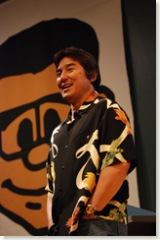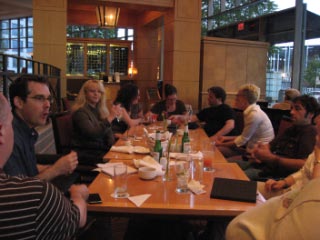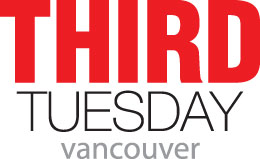The team of Web developers and designers I work with at 76design have got the social media bug. And they’ve been developing some neat applications and widgets to help people create, share and mash-up content.
I’m enthused about what the 76designers are doing. And when they are ready to launch their apps, I want to play my part in telling the world about what the they have done.
 So, Guy Kawasaki‘s Gnomedex presentation about how to be a good evangelist spoke directly to me.
So, Guy Kawasaki‘s Gnomedex presentation about how to be a good evangelist spoke directly to me.
Guy charted out his ten rules plus one for effective evangelism:
1. Evangelism starts with the desire to make meaning. The root of great companies is in making meaning, not just money. The people who start with a desire to make money often fail because they attract the wrong kind of co-founders and investors.
2. Make Mantra, not mission statement. Mission statements are often meaningless. Instead, a company needs a simple 3-4 word mantra that captures the essence of the company. For example – Wendy’s: “Healthy Fast Food.” eBay: “Democratize commerce.” FedEx: “Peace of Mind.”
3. Roll the DICEE. We want to touch things that are golden. To identify this, look for something that is Deep (Reef sandal that includes a bottle opener on the bottom), Intelligent (Panasonic flashlight that takes multiple battery sizes), Complete (It’s not just the Lexus auto you buy, it’s the total experience of service), Elegant and Emotive (Harley Davidson).
4. Niche thyself. Strive to achieve both value to the customer and a unique quality to the product or service. In other words, to be a successful evangelist, you need to be promoting something that offers real value.
5. Let a hundred flowers blossom. When you have a product or service, don’t assume you know who will use it and for what purpose. Be open to the unplanned. And follow those who are enthusiastic.
6. Make it personal. Relate directly to how the product or service affects the individual. How does it help you?
7.  Find the true influencers. People who have imagination, can use a product and will have a passion for it. This is not likely to be in the C-suite.
Find the true influencers. People who have imagination, can use a product and will have a passion for it. This is not likely to be in the C-suite.
8. Enable test drives. Give people a chance to try the product at no cost. Experience of a good product or service will sell that product or service.
9. Look for agnostics, not atheists. Never try to convert an atheist. It’s unlikely to happen.
10. Provide a slippery slope, an easy way for someone to say yes or to engage with you.
11. Don’t let the bozos grind you down. Believe. Be prepared to make mistakes. Keep going.
After Guy’s presentation, one of the audience members asked him about his earlier admonition that, when developing software, you should “ship then test.” Guy underlined the need to get software out to the community as early as possible so that they can play with it. Everything will have its share of bugs. But users will quickly identify them and you can fix them as they do so. He wouldn’t recommend this approach for life sciences (!), but it works great for software.
Good advice from Guy Kawasaki that I know I will refer to again and again.
*Thanks to Josh Hallett for the Guy Kawasaki photos. For more great photos, check out Josh’s hyku photostream on Flickr.
 I use Technorati. And I use Google. Each is good for different things. As a blogger, Technorati still gives me a better indicator of who is linking to me. Yes, I think that Technorati’s notion of “Authority” is nothing more than popularity. And in my business I know that profit is not the same as success (success is much bigger and broader than simply being profitable.) But, it’s still the best, most available indicator to me of whether my blog is having any influence, as measured by the people who think enough of my posts that they link to them.
I use Technorati. And I use Google. Each is good for different things. As a blogger, Technorati still gives me a better indicator of who is linking to me. Yes, I think that Technorati’s notion of “Authority” is nothing more than popularity. And in my business I know that profit is not the same as success (success is much bigger and broader than simply being profitable.) But, it’s still the best, most available indicator to me of whether my blog is having any influence, as measured by the people who think enough of my posts that they link to them.



 It looks like the Third Tuesday Vancouver social media series of monthly events is a go. A dozen social media folks came out Monday evening to discuss bringing the events to Vancouver. At the end of the evening, new friendships had been made and the group agreed to launch the series.
It looks like the Third Tuesday Vancouver social media series of monthly events is a go. A dozen social media folks came out Monday evening to discuss bringing the events to Vancouver. At the end of the evening, new friendships had been made and the group agreed to launch the series.
